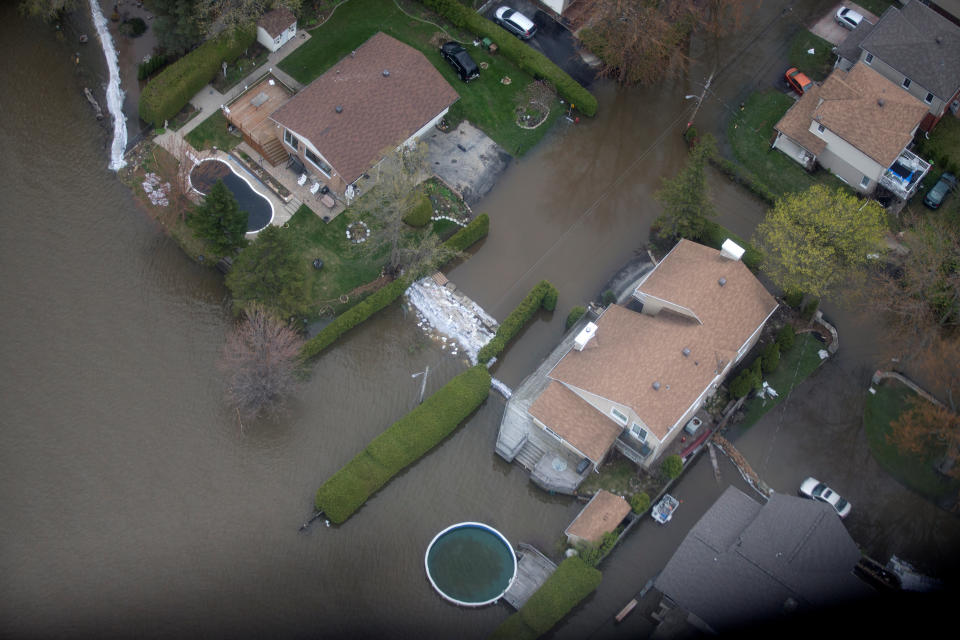Catastrophic: Canada gets dire warning about climate change

A report released this week by Environment and Climate Change Canada reveals some startling truths about the country’s future. Titled Canada’s Changing Climate Report, the document forecasts grim and catastrophic changes to the landscape of the country, as a direct result of environmental changes.
The most startling takeaway from the document is that Canada is warming at twice the rate of the rest of the world. And while the future isn’t written in stone, the actions we take immediately to reduce greenhouse gas emissions will influence whether temperatures will go up by either two degrees or six degrees.
Other disturbing findings from the report include:
More bouts of hot, intense temperatures, as a result of warming climate.
Warming oceans around Canada, which result in acidic water.
Northern Canada is warming three times faster than the global average.
More heavy rainfall across the country, but a decrease during the summer months.
“Really bad or catastrophic”
Keith Stewart, Senior Energy Strategist with Greenpeace Canada, describes the two potential future environmental outcomes in the country as either “really bad or catastrophic.”
Canada will continue to warm, regardless of whether we cut back greenhouse gas emissions or not, it just depends at what rate.
“We have to take our foot off the accelerator before we hit a brick wall,” he tells Yahoo Canada. “Maybe having a better airbag is a good thing but do you want to hit the wall at 20 kilometres an hour or 120?”
While the projections of the report focus on mid-century or end of century, Dr. Megan Kirchmeier-Young, a research scientist with Environment Climate Change Canada, says we can’t expect extreme weather that leads to forest fires and flooding to suddenly go away.
“We’ll continue to have heavy rainfalls that will lead to flooding and longer growing seasons,” she says. “This impacts on the heating and cooling days - how long we’ll need to run our heaters or air conditioning.”

Boiling down warming
Canada’s high rate of warming boils down to two reasons: land areas warm faster, and an increased warming in all of the arctic and northern high latitudes.
Kirchmeier-Young explains that this is because of the melting of snow and ice.
“If you take a bright surface like white snow or sea ice, it reflects a lot of sunlight back,” she explains. “And without that, you’re replacing it with darker land or water surface and so that’s absorbing more of the incoming radiation, and that will warm the surface more, and increase the warming and lead to further reduction in snow and sea ice.”
While Canada is warming faster than the rest of the world, circumpolar countries like Russia, Sweden and Finland are also seeing warming at a similar rate.
Brace for extreme weather
Stewart explains that specific regions will experience different weather extremes within the next 50 years. He predicts extended periods of drought for the Prairies, while the Boreal forest region will see more forest fires as a result of tinder-dry conditions. The coastal areas of the east coast will get hit with more hurricanes and continue to rise in water levels, which will lead to more flooding.
“What we’re going to see with this is stronger heatwaves and drought, which damage crops,” he says. “There will be more forest fires, which we saw in B.C. last year. Those will become much more frequent.”
The extreme weather changes also have real potential to affect wildlife. Stewart says that the types of changes described in the report are changes that have happened before, pre-civilization, over the course of 50,000 years.
“Forests can move, ecosystems can slowly shift,” he says. “But when you pack these changes into the course of 50 years...we’re not the Lord of the Rings movie where the forest gets up and goes somewhere else. The forest burns because it’s no longer in the right climate zone that it’s designed.”
He says the amount of species that become extinct, and the damage done to our landscape, will depend on how big and fast the changes are, which comes down to us.
“People are going to lose their homes to storms, wildfires and flooding,” he says. “Businesses are going to be disrupted. It’s just a question of how many and how soon. That’s what we have control over. We also have to make investments to protect from flooding and wildfires.”

The report finds that if the country goes the way of a low emissions scenario, temperatures will stabilize. If it continues on the high emissions route, the results will be grim. It all comes down to the changes we make as humans.
“One of the key findings of the report is that Canada has warmed and that’s largely due to human emissions,” says Kirchmeier-Young. “Along with that, how much we continue to warm depends on how much we continue to emit.”

